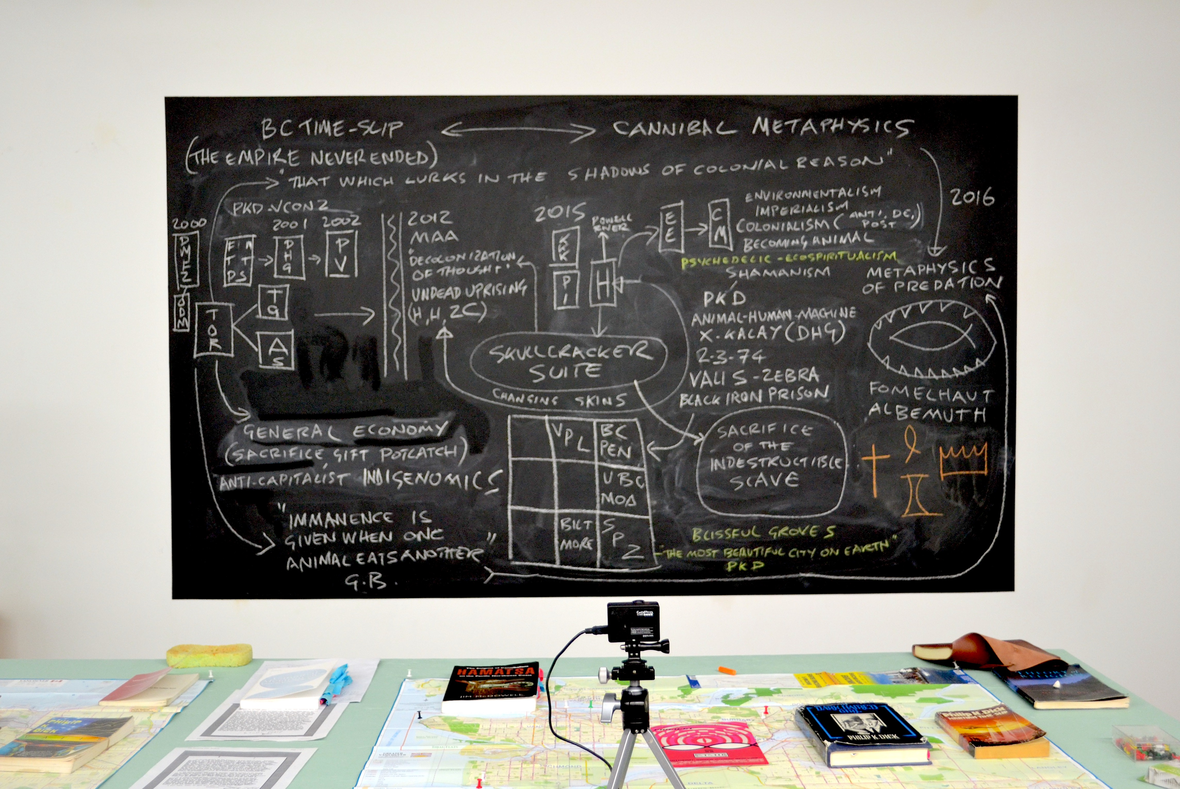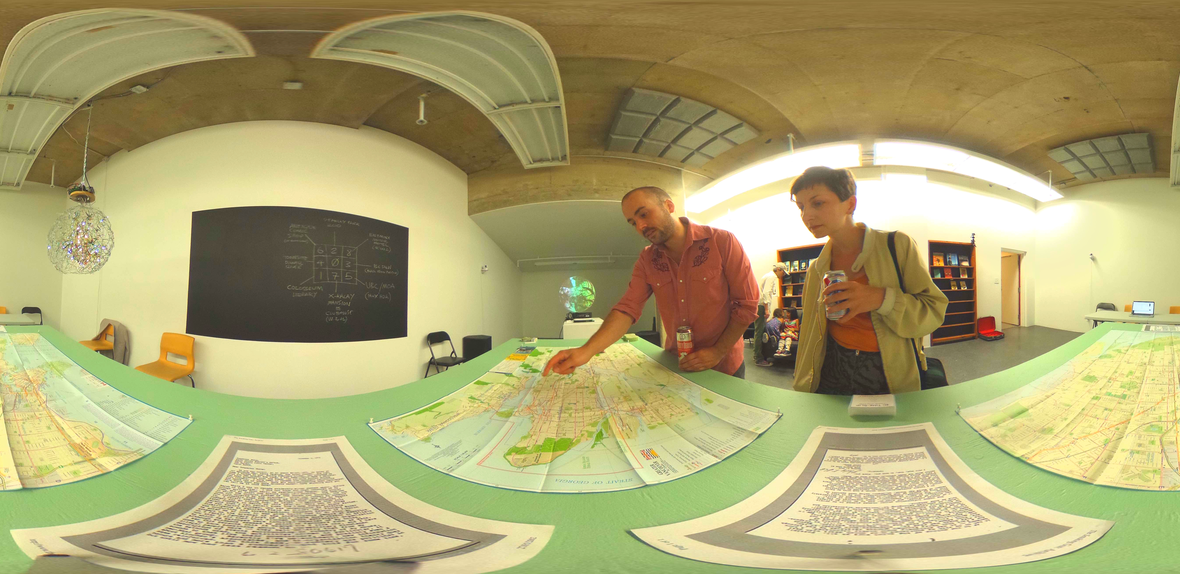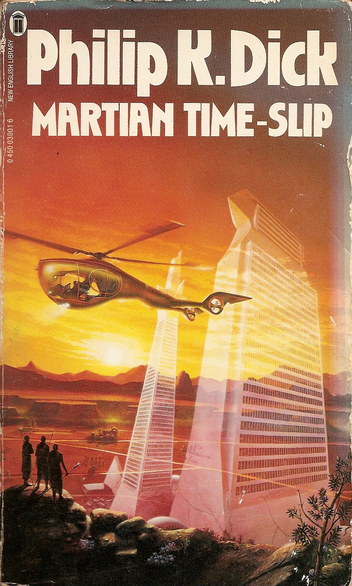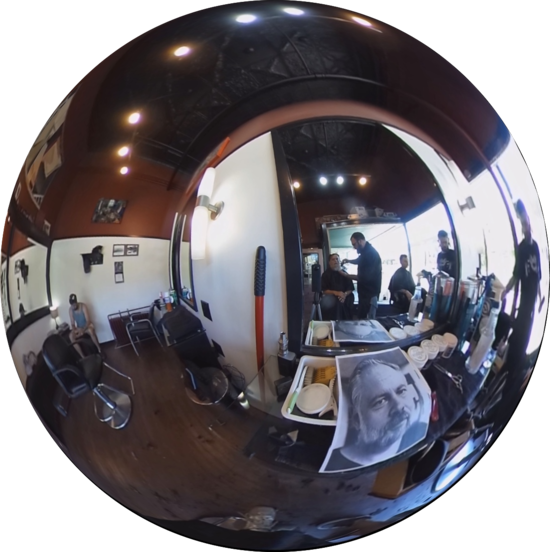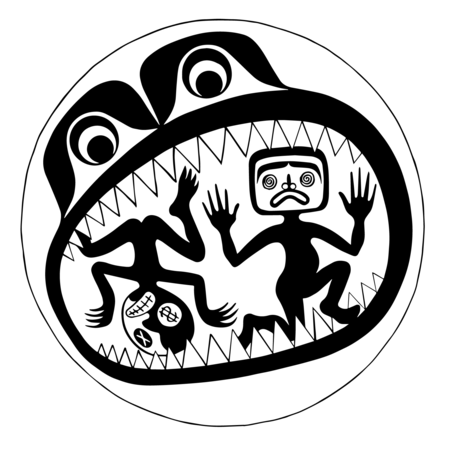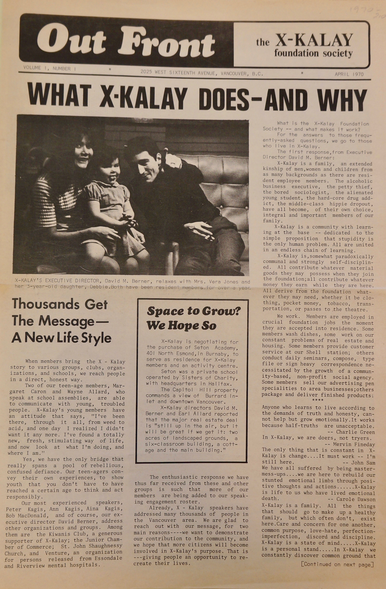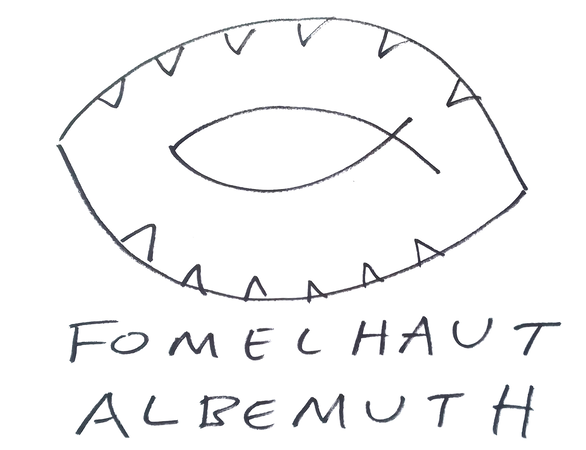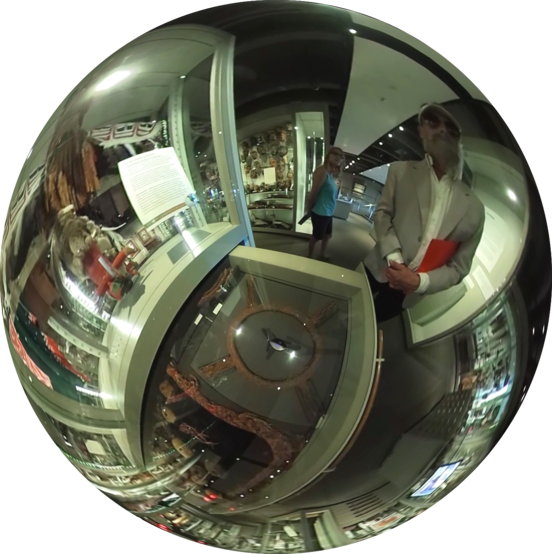BC Time-Slip (The Empire Never Ended) is the first phase of a long-term artistic research project called The Skullcracker Suite. Taking its name from Philip K. Dick's 1964 novel Martian Time-Slip, the project used the story of Dick's visit to Vancouver in 1972 and his stay at a rehab clinic created for First Nations ex-cons as a pretext to investigate the cultural politics of decolonization in British Columbia since the 1960's. The project began as a one month residency at Dynamo Arts Association, Vancouver in August 2016 and culminated with the publication of a catalogue essay for the Kwakwaka'wakw artist Beau Dick's posthumous show at White Columns gallery in New York in April 2019. More information about the origins of the Skullcracker Suite and the development of the project can be found at the research blog created for the project during the Dynamo residency.
BC Time-Slip was supported by a Leverhulme Research Fellowship from June 2016 - December 2017.
During the residency the Dynamo gallery was converted into a Special Investigations Room researching the story of Dick's visit to Vancouver in 1972 and the circumstances surrounding his nervous breakdown, attempted suicide and subsequent stay at a rehab clinic called X-Kalay. These were contextualised in relation to the cultural politics of colonialism in the 1960's and 70's; the residual impacts of British imperalism in Vancouver at the time; the relevance of Dick's space colonization narratives for his experiences in the city; and their contemporary critical and educational potential. The Investigation Room was used by myself and the artists Stephanie Moran and Grégoire Dupond to gather and share information and exhibit our findings. Correlations between the various themes and concepts within the project were drawn out on a blackboard painted onto one of the walls in the space. I hosted a series of public lectures, discussions and film screenings in the gallery to which a selected public was invited. The gallery was open to the general public for the duration of the residency and the space was filmed and recorded continually by two closed-circuit cameras at each end of the room.
An account of Dick's time in Vancouver - Passing for Human - can be found on the BC Time-Slip blog.
During the Dynamo residency I created a series of 360° videos depicting Dick's time in the city, myself playing the author, which were projected in the gallery. I also documented several conversations about the project and the contemporary politics of decolonization in British Columbia with colleagues. A selection of the video spheres can be found here. A recent HTML 5 browser is needed and the spheres take some time to load. Double click on any sphere to bring it up and again to go back to the grid. The spheres are manipulable using a mouse or trackpad.
Towards the end of the residency at Dynamo Arts I was invited to attend the potlatch ceremony of Chief Alan Hunt in Fort Rupert, Vancouver Island. Potlatch is a generic term used to describe the traditional gift giving ceremonies, feasts and seasonal celebrations of the First Nations people of the Pacific Northwest, often held when a person passes into a new stage of life and status (births, deaths, marriages, naming ceremonies etc.). Despite attempts to prohibit potlatching by the colonial authorities in the late 19th and early 20th centuries, its continuation became a focus for cultural resistance and indigenous resurgence in the region. Like his mentors Wayne Alfred, Marcus Alfred, Bruce Alfred and Beau Dick, Alan Hunt comes from a long line of Kwakwaka'wakw artists who have fought to preserve their people’s customs and traditions.
Alan is a carver of Kwakwaka’wakw and Tlingit ancestry and a descendant of George Hunt, Franz Boas’s advisor and lead research assistant in his influential study of Kwakwiutl ethnography. George Hunt’s father, Robert Hunt had worked for the Hudson Bay Company, whose main trading post was in Fort Rupert. During the ceremony Alan was inaugurated as a potlatch chief and received the name Hamasaḵa from his great grandfather Ha̱midi (Hutch Hunt). Alan initiated his brother Jaden into the Hamatsa society with the name T̓sa̱mkwag̱ał and showed the dowry which came when he married his wife Alexis: The Weather dance, the Bear dance and The Intruders.
The Skullcracker team (myself, Steve Calvert, Grégoire Dupond and Stephanie Moran) were given permission to document all the dances performed at Alan's potlatch. A selection of images and videos from the ceremony can be seen here. Below is one of the performances from the sequence: an articulated Raven mask recently carved by Beau and Alan at Beau's studio at the UBC Department of Art History, Visual Art and Theory in Vancouver where Alan worked as Beau's apprentice. Beau is the figure in the video wearing a white shirt and directing the dancer with a rattle.
In March 2019 I completed a final edit of the footage and made the 33 video files available to Alan to use for educational purposes within the Alert Bay and Fort Rupert communities. Given the sacred nature of some of the dances Alan asked me to keep most of the videos private. I have however been given permission to make a number of them public and all the videos are available for educational purposes upon request.
Following my return from British Columbia to the UK in 2016 I produced two video works combining material generated during the residency with found footage, images and audio interviews with Philip K. Dick. These works are rough sketches for a future BC Time-Slip video installation. The second of them can be seen below.
In December 2017 I returned to Vancouver to conduct the final phase of research for the project. I met with David Berner, founder of X-Kalay, the rehab clinic in which Phillip K.Dick had stayed in 1972, and filmed a 50 minute interview with him. In it we discussed the origins of X-Kalay; the foundation's underlying principles and values; its transformation into one of the most important drug-recover programs in Canada; his friendship with Gloria Webster Cranmer (a Kwakwaka'wakw noble from Alert Bay who was instrumental in setting up the U'mista Cultural Centre); the day care program at X-Kalay; and David's criticism of contemporary drug-rehabilitation policies in Vancouver. The entire interview was made public on my Vimeo channel in February 2019. In the sequence below David reflects on Native politics at X-Kalay; struggles for control of the organization; the influence of Charles Dederich's leadership of the Synanon community in California; and his memories of Philip K. Dick at the foundation.
While in Vancouver I began a conversation with LaTiesha Fazakas, Beau Dick and Alan Hunt's gallerist, whom I had met at Alan's potlatch. We discussed the Skullcracker/BC-Time-Slip projects and the potential for future collaborations. Our conversation was guided initially by the formal similarities between a recently created print by Beau called Devoured by Consumerism (2016) and an image drawn by Phillip K. Dick to illustrate what would become known as The Exegesis (2011), his attempt to account for a series of visions he received in February and March 1974 after his return to California.
Our discussions eventually led to my writing a catalogue essay - 'In The House of the Man Eater' - for Beau Dick's posthumous exhibition at White Columns gallery (New York) in April 2019, marking the end of the BC Time-Slip phase of The Skullcracker Suite. The essay can be read by clicking on the catalogue cover below.
